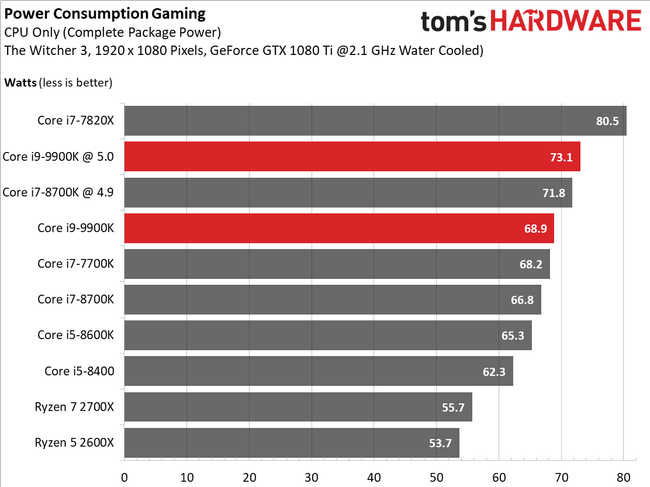So according to MSI:
- For the i9 10900K/KF the required voltage for a 5.0GHz all-core overclock is on average 1.26V; for 5.1GHz is on average 1.30V; and for 5.2GHz is on average 1.35V.
- The distribution of these chips is 27% great overclockers, 35% average overclockers, 27% limited overclockers.
From the above it follows that:
27% of the chips will do all-core 5.0GHz with a voltage lower than 1.26V
35% of the chips will do all-core 5.0GHz with a voltage equal to 1.26V,
27% of the chips will do all-core 5.0GHz with a voltage higher than 1.26V.
27% of the chips will do all-core 5.1GHz with a voltage lower than 1.30V
35% of the chips will do all-core 5.1GHz with a voltage equal to 1.30V,
27% of the chips will do all-core 5.1GHz with a voltage higher than 1.30V.
Also, following the same logic for the 5.2GHz data, it follows that:
27% of the chips will do all-core 5.2GHz with a voltage lower than 1.35V
35% of the chips will do all-core 5.2GHz with a voltage equal to 1.35V,
27% of the chips will do all-core 5.2GHz with a voltage higher than 1.35V
So it is safe to say that nearly all 10900K/KF chips will be able to hit an all-core overclock of 5.0GHz with a voltage that does not exceed 1.3V and an all-core overclock of 5.2GHz with a voltage that does not exceed 1.4V. Also 62% of them will be achieving 5.0GHz with a voltage that does not exceed 1.26V and 5.2GHz with a voltage that does not exceed 1.35V. And probably the top 27% will do 5.1GHz with around 1.2V and 5.4GHz with around 1.4V.



